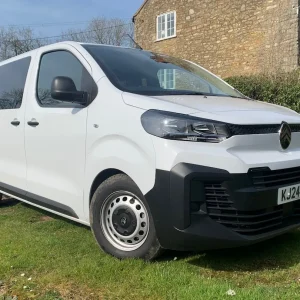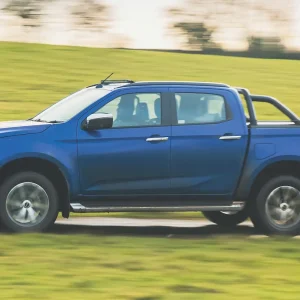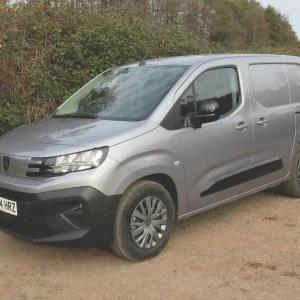It has been almost two years since PSA, Peugeot and Citroen’s parent company, announced it was acquiring Vauxhall from General Motors – and the impact on Vauxhall’s light commercial line-up has been enormous.
Unlike its predecessor, which was based on the Renault Trafic, the new Vivaro uses the same platform as Peugeot’s Expert and Citroen’s Dispatch.
The new Combo, meanwhile, is based on Peugeot’s Partner and Citroen’s Berlingo. All three jointly won the What Van? LCV of the Year Award for 2019.
The vans are being marketed with two different wheelbases delivering two different overall lengths: L1 and L2. There is one roof height giving a load cube of either 3.3m3 or 3.8m3 while gross payload capacities run from 667kg to 1,050kg.
Engine and gearbox
Buyers can pick either a 1.6-litre BlueHDi Euro6.1 diesel generating either 75hp or 100hp or a 1.5-litre BlueHDi Euro6.2 diesel offering 131hp.
You get a five-speed manual gearbox with the former and can choose either a six-speed manual or an eight-speed auto gearbox if you opt for the latter. A 1.2-litre petrol engine looks set to arrive later this year.
The 1.6-litre is due to be dumped in the coming months in favour of equivalent versions of the 1.5-litre. It is still worth a look though, and the 100hp version was sitting under the bonnet of the Combo tested here: a Cargo Sportive L1.
Driving
A few minutes behind the wheel served to confirm that the decision of What Van? to grant it our top accolade for 2019 was the right one. The ride and handling are both top-notch, and the smoothness of the five-speed ’box’s change left us impressed.
With 100hp on tap in a relatively small van there’s no lack of performance even with almost half a tonne of bagged gravel on board, but the lack of a sixth gear dents its appeal as a motorway cruiser. Other drawbacks include too high a level of wind and road noise.
Load bay
Access to the cargo bay is via asymmetric rear doors and a sliding nearside door. Six cargo tie-down points are fitted, as is a full-height steel bulkhead. Opt for the FlexCargo pack for an extra £510 and the bulkhead will feature an opening panel directly behind the outboard passenger seat. It allows a load-through facility to be created once you have folded the seat down to allow the Combo to carry extra-long pipes and lengths of timber.
You can push them into a receptacle that could double as Santa Claus’s sack to stop them sliding around the cab (see picture, above). Doing so is a rather awkward exercise, and we suspect most drivers will detach the sack after a while and leave it to one side.
Interior and equipment
FlexCargo also gets you a middle seat with a back that can be folded down and turned into a desk. Nobody, however, will want to sit on the middle seat because it offers no legroom.
If there’s a middle seat then where does the handbrake lever go? It hasn’t been mounted between the driver’s seat and door – the lever is done away with completely and the parking brake is switch-operated instead.
Select Sportive trim – half-way between Edition and LE Nav – and you’ll not be short of kit.
The list includes aircon, cruise control, heated exterior mirrors, reversing sensors and metallic paint. Our demonstrator also boasted a £570 safety pack with Lane Departure Warning and automatic emergency braking with pedestrian detection.
Cargo Sportive L1H1 2000 1.6 100hp Turbo D Start/Stop
Price (ex VAT) £17,705
Price range (ex VAT) £15,630-£20,355
Warranty 3yrs/60,000mls
Service intervals 1yr/16,000mls
Load length 1,817mm
Load width (min/max) 1,229/1,550mm
Load bay height 1,236mm
Load volume 3.3m3
Gross payload 668kg
Engine size/power 1,560cc/100hp
Combined fuel economy 65.6mpg
CO2 111g/km





